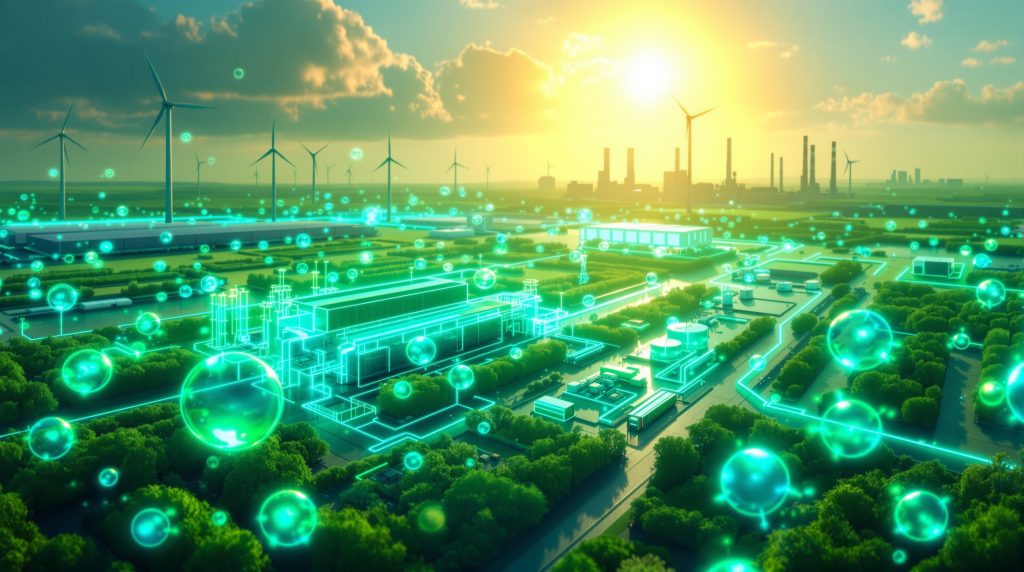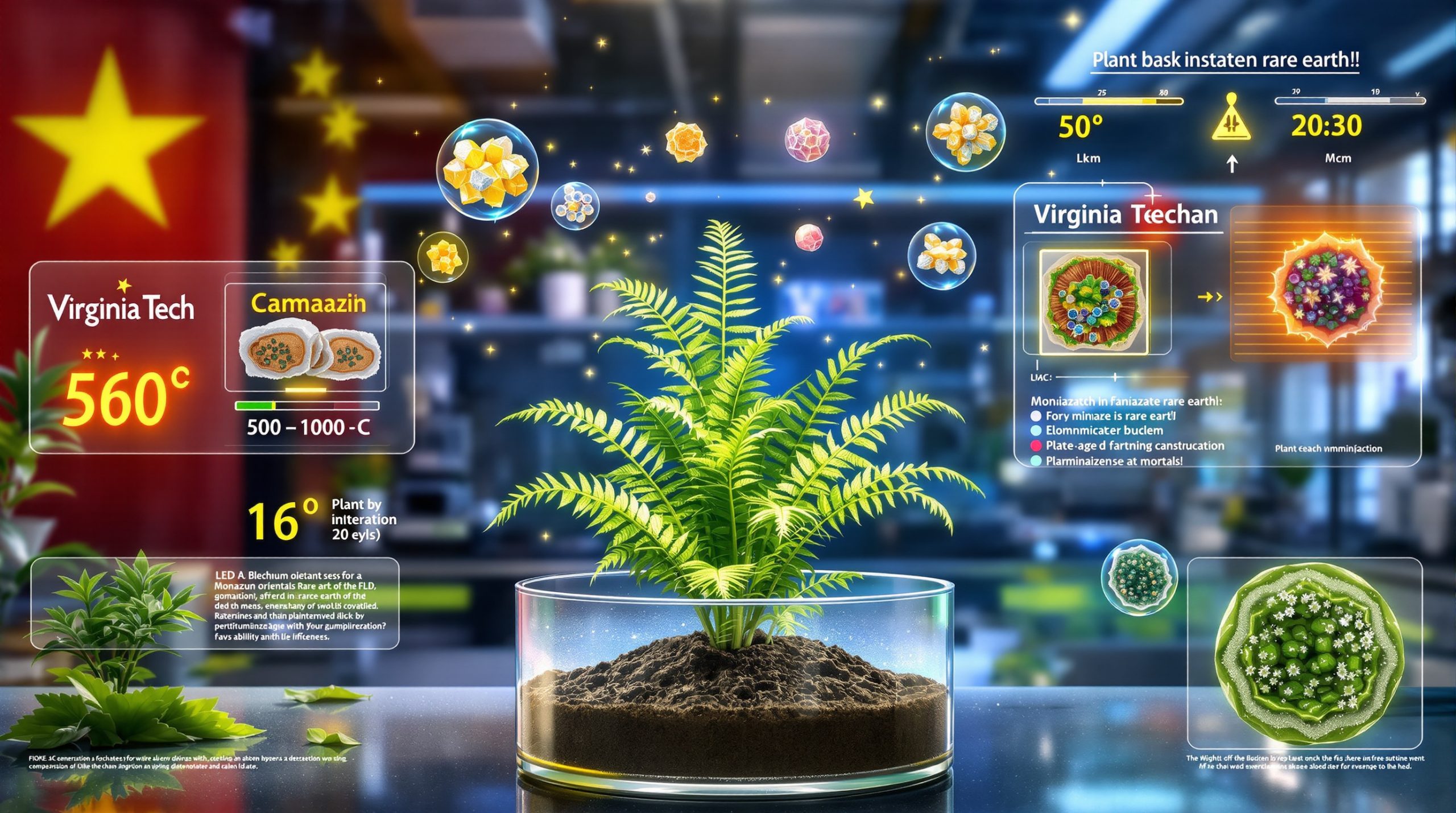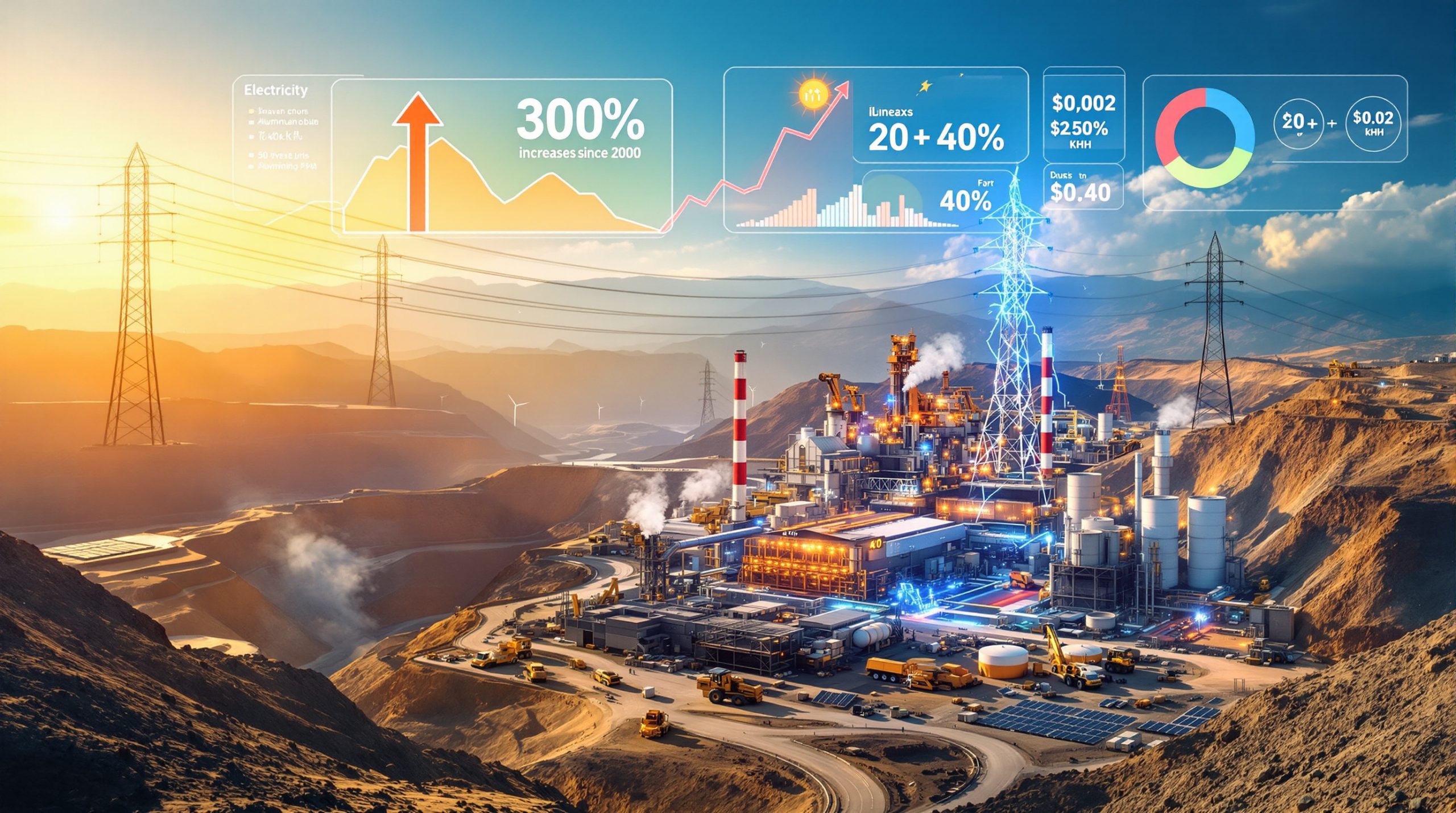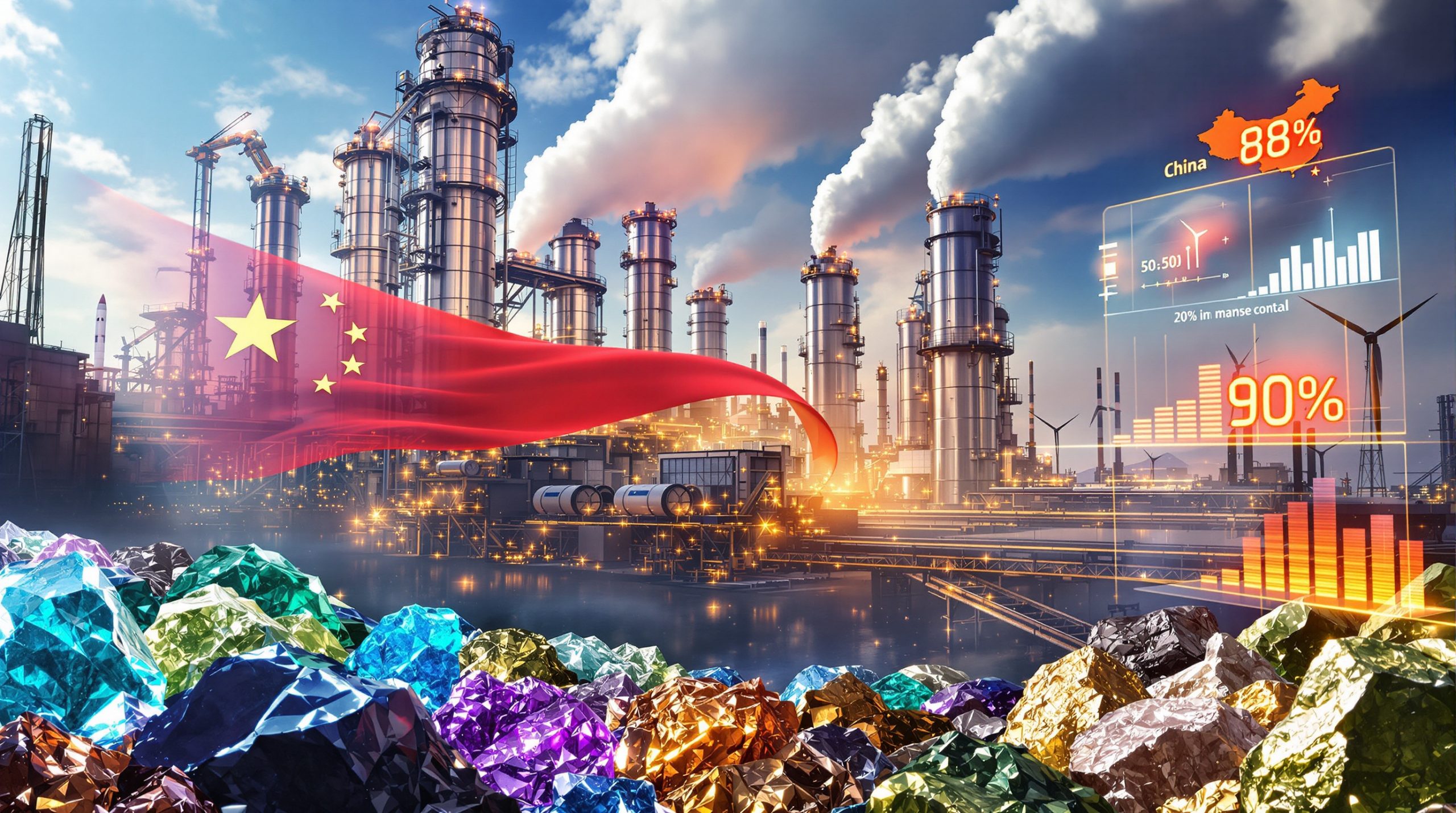What is Green Hydrogen and Why is it Important?
Green hydrogen is produced by splitting water molecules (H₂O) using electricity from renewable sources such as wind or solar. Unlike gray hydrogen, derived from natural gas with significant carbon emissions, or blue hydrogen, which relies on carbon capture and storage, green hydrogen uses renewable power, resulting in zero direct CO₂ emissions. Another variant, pink hydrogen, leverages nuclear energy for electrolysis.
Hydrogen stands out as an energy carrier due to its high gravimetric energy density and the fact that its combustion releases only water vapor. This makes it a compelling candidate for decarbonization, especially in sectors where direct electrification is challenging, such as heavy industry and long-haul transport.
The capacity to use hydrogen both as a clean fuel and a raw material for industrial processes positions it at the heart of future energy transition insights. As countries and industries aim for net-zero emissions, green hydrogen offers a bridge to transform power, manufacturing, and transportation, helping drive down emissions where other solutions struggle to compete.
Critical insight: Fortescue, one of the world's largest iron ore miners, exemplifies industrial commitment to green hydrogen by planning to use it in green iron production at its Western Australian operations. This strategic pivot highlights hydrogen's role in meeting internal decarbonization targets and tapping into global green steel demand.
How is the Green Hydrogen Market Evolving?
Green hydrogen's commercial landscape is advancing rapidly as multinational corporations and governments ramp up investment and deployment. Estimates in 2023 put the global green hydrogen production capacity at approximately 0.3 million tonnes per year. The market value is anticipated to surge from around $2.5 billion in 2023 to as much as $135 billion by 2035, driven by technological gains and expanding policy support.
Key regions leading this momentum include:
-
Europe: Prioritizing hydrogen in its energy transition plans and investing heavily in electrolyzer scale-up
-
Australia: Leveraging abundant solar and wind, with a strong focus on hydrogen export, exemplified by projects like Fortescue's green iron initiative
-
Middle East and Chile: Capitalizing on low-cost renewables to become potential global hydrogen export hubs
Despite significant announcement activity, progress varies due to fluctuating project economics. The transcript from Kitco News highlights an important reality: Fortescue halted two major green hydrogen initiatives in Arizona and Australia after encountering higher-than-projected costs. This underlines the financial and technical complexity that can slow broad adoption.
Projected Price Reductions
Current green hydrogen production typically falls between $4 and $6 per kilogram, driven by the high costs of electrolyzers and renewable power. However, industry targets are aiming for sub-$2/kg hydrogen, considered the tipping point for widespread competitiveness with conventional methods.
Investment Trends
-
Over 680 gigawatts (GW) of electrolyzer projects are currently in the pipeline worldwide.
-
Venture capital and private equity investment crossed $7 billion in 2023.
-
Strategic partnerships are forming across sectors, linking renewable generators, technology companies, and end-users.
Speculative perspective: Volatility in project costs and material prices may cause setbacks or market consolidation as companies chase scalable, repeatable hydrogen solutions.
What Are the Key Elements of Successful Green Hydrogen Strategies?
A robust green hydrogen strategy is multi-dimensional, integrating:
Production Infrastructure
-
Electrolyzer Selection: Choices include PEM (proton exchange membrane), alkaline, and emerging solid oxide systems. Each varies in efficiency, capital cost, and suitability for intermittently supplied renewable energy.
-
Renewable Integration: Deploying large-scale electrolyzers demands consistent access to clean electricity. Balancing renewable intermittency with electrolyzer load profiles is critical.
-
Water Resource Management: Producing 1 kg of hydrogen requires approximately 2-3 gallons of purified water, a non-trivial demand at industrial scale, especially in arid regions.
-
Scaling Approach: Most projects commence as pilots, then scale to commercial operations as experience and confidence build.
Distribution and Storage Solutions
-
Pipeline Networks: Existing natural gas pipelines often require retrofitting for hydrogen due to hydrogen embrittlement and leakage risks.
-
Compression & Liquefaction: Hydrogen can be distributed as compressed gas, cryogenic liquid, or carried in chemical forms (e.g., ammonia, LOHC—liquid organic hydrogen carriers).
-
Hydrogen Hubs: Strategic aggregation points enable cost sharing for infrastructure and facilitate market development.
-
Last-Mile Delivery: Addressing distribution challenges for diverse applications, from refueling heavy-duty vehicles to supplying industry feedstock.
End-Use Application Prioritization
-
Industrial: Green hydrogen is vital in producing low-emissions steel (as targeted by Fortescue), ammonia for fertilizers, and refining.
-
Transport: Especially for long-haul trucks, shipping, and aviation where batteries may fall short.
-
Power Generation: Hydrogen enables grid balancing and seasonal storage for renewables-heavy systems.
-
Heat: Potential for decarbonizing high-temperature industrial and residential heat.
Industry insight: Fortescue's pursuit of green iron represents an effort to create both supply and demand for green hydrogen, attempting to shape a vertically integrated green commodity ecosystem.
How Are Leading Companies Implementing Green Hydrogen Strategies?
Case Study: Fortescue's Green Energy Pivot
-
Financial Snapshot: In fiscal 2025, Fortescue reported a net profit after tax of $3.37 billion (down from $5.68 billion), matching analyst expectations and demonstrating resilience despite challenging iron ore prices.
-
Strategic Reassessment: Fortescue recently cancelled two high-profile green hydrogen projects (in Arizona and Australia), citing unexpectedly high cost estimates. Yet, the company maintained its dividend, with a payout ratio of 65% of profits and a final dividend of A$0.60 per share, emphasizing continued financial strength.
-
Ongoing Commitment: The organization reaffirmed its focus on green hydrogen and decarbonization, pushing ahead with green iron production plans at its Western Australian mines.
-
Broader Opportunity: CEO Gus Pichot confirmed that Fortescue continues exploring global opportunities in metals, critical minerals, energy, and technology—hinting at diversification beyond iron ore.
Corporate Leadership Elsewhere
-
Air Products: Pursuing a $8.5 billion green hydrogen and ammonia facility as part of Saudi Arabia's NEOM development.
-
Iberdrola: Building a renewable hydrogen ecosystem, especially in Spain, focusing on transportation and industrial use.
-
Ørsted: Integrating offshore wind with electrolyzer projects to supply industrial customers.
-
ThyssenKrupp: Advancing steel decarbonization by integrating hydrogen-based direct reduction plants.
Unique perspective: Despite short-term financial setbacks, major resource companies are betting that mastery of green hydrogen will position them as leaders in next-generation energy.
What Challenges Must Green Hydrogen Strategies Address?
Economic Barriers
-
Production Cost Disparity: Producing green hydrogen remains costlier than gray (fossil-based) hydrogen, with green at $4-6/kg versus $1-2/kg for gray.
-
Upfront Capital: Infrastructure for large-scale electrolyzers, renewable energy solutions, and hydrogen transport demands billions in upfront investment, often requiring government subsidies or innovative funding models.
-
Project Cancellations: High cost estimates have led to delays or discontinuations, as seen with Fortescue's projects.
Technical and Infrastructure Limitations
-
Efficiency Losses: Converting electricity to hydrogen and back to power results in total round-trip efficiencies of only 50-70%.
-
Material Science Barriers: Hydrogen can embrittle steel and cause leaks, complicating pipeline and storage infrastructure.
-
Grid Stress: Large, intermittent electricity loads from electrolyzers can stress existing grids if not properly coordinated.
-
Safety: Strict safety standards are needed due to hydrogen's combustibility and tendency to escape containment.
Policy and Regulatory Frameworks
-
Complex Landscape: Developers must navigate a patchwork of permitting processes, safety standards, and certification regimes.
-
Carbon Pricing: Credit for avoided emissions varies significantly across markets, impacting project economics.
-
International Trade: The potential for long-distance hydrogen or ammonia shipping introduces regulatory risk and compliance cost.
Market psychology: The sector is marked by cautious optimism, with strategic pivots common as developers reassess financial viability amid evolving policy and market signals.
What Government Policies Are Shaping Green Hydrogen Development?
Success in green hydrogen hinges on targeted public policy and robust incentives, which help bridge the gap between current costs and near-term competitiveness.
National Hydrogen Strategies
-
European Union: Aims to deploy at least 40 GW of electrolyzer capacity by 2030, backed by a suite of funding programs and blending mandates.
-
United States: The Hydrogen Hubs program allocates $8 billion to regional hydrogen ecosystem development, while the introduction of production tax credits under current US administration is reshaping investment dynamics.
-
Japan: Outlined a technology roadmap to foster a hydrogen-centric society, focusing on infrastructure, transportation, and storage.
-
Australia: Pursues a competitive export strategy, aiming to become a global supplier to East Asian markets such as Japan and Korea, as outlined in Australia's National Hydrogen Strategy.
Incentive Mechanisms
-
Subsidies: Tax credits and capital grants lower initial project costs.
-
Demand Stimulation: Quota systems and blending mandates guarantee a baseline market for green hydrogen.
-
Public-Private Partnerships: Government collaboration with industry leverages risk-sharing and catalyzes infrastructure build-out.
Regulatory warning: Navigating government programs demands careful attention to the evolving legal landscape, and the success of incentives is often determined by political continuity and effective policy execution.
How to Develop an Effective Green Hydrogen Strategy?
Strategic Planning Framework
-
Value Chain Analysis: Companies must assess where they can create maximum value—whether in production, infrastructure development, or downstream applications.
-
Technology Readiness: Employing a readiness matrix helps organizations determine when and where to deploy maturing electrolyzer, storage, and transport technologies.
-
Market Entry Timing: Early movers may secure advantageous supply agreements but also face higher risks.
-
Competitive Edge: A blend of in-house expertise, intellectual property, and strategic partnerships can deliver durable advantage.
Implementation Roadmap
-
Pilot and Demonstration: Start with small-scale deployments to validate technology and business models
-
Scale-Up: Gradually expand to commercial scale leveraging insights from demonstration projects
-
Partnerships: Forming consortiums or alliances can reduce risk and broaden capability
-
Risk Mitigation: Employing offtake agreements, staged investments, and technology diversification
-
Performance Metrics: Regularly track cost reductions, carbon intensity, plant utilization, and market penetration
Financial Modeling
-
Capital Allocation: Spreading investment across the value chain while hedging against renewable power price variability
-
Funding Diversity: Secure multiple funding sources (equity, debt, grants)
-
Risk-Adjusted Returns: Tailor returns to project stage, technology risk, and market maturity
Fortescue's approach demonstrates that even after project setbacks, companies can leverage robust balance sheets and ongoing innovation to remain in the green hydrogen race.
What Does the Future Hold for Green Hydrogen?
Green hydrogen's future is dynamic, shaped by emerging technologies, global decarbonization pressures, and evolving market structures.
Innovation Frontiers
-
Next-Gen Electrolyzers: High-temperature and seawater-adapted designs could cut costs and expand applicability.
-
Advanced Storage: Metal hydrides and underground caverns may enable bulk hydrogen storage.
-
AI and Digital Twins: Optimizing plant operations and predicting maintenance for better economics.
System Integration
-
Sector Coupling: Hydrogen can bridge electricity, heat, and transport sectors, supporting whole-system flexibility.
-
Seasonal Storage: Enables renewables-based grids to balance supply and demand across months.
-
Circular Economy: Combining green hydrogen with captured CO₂ to create synthetic fuels and chemicals.
Market Evolution Scenarios
| Year | Global Market Value ($B) | Electrolyzer Capacity (GW) | Share of Final Energy (%) |
|---|---|---|---|
| 2023 | 2.5 | 0.3 | <1 |
| 2030 | 50 (projected) | 40 (EU target) | 2-5 (est.) |
| 2035 | 135 (projected) | 100+ (est.) | 5-10 (est.) |
| 2050 | TBD | TBD | 15-20 (potential) |
Disclaimer: These projections are subject to change as technology, policy, and market dynamics evolve. Engage with up-to-date industry research and consult multiple sources for investment and strategy decisions.
FAQ: Green Hydrogen Strategy Development
What is the difference between a green hydrogen strategy and conventional hydrogen approaches?
-
Green strategies prioritize renewable energy, resulting in near-zero life-cycle emissions, unlike fossil-derived hydrogen.
-
They require new certification systems, infrastructure, and policy incentives.
-
Timelines and capital needs differ significantly.
How long does it typically take to implement a green hydrogen strategy?
-
Pilot projects: 1-2 years
-
Commercial-scale: 3-5 years
-
Full industry integration: 5-10 years or longer
What are the key performance indicators for measuring green hydrogen strategy success?
-
Cost trajectory ($/kg of H₂ produced)
-
Carbon emissions per kilogram of hydrogen
-
Electrolyzer utilization rates
-
Market share in relevant sectors
-
Return on invested capital
How can companies mitigate risks when developing green hydrogen strategies?
-
Diversify technology across suppliers and processes
-
Implement phased capital deployment
-
Secure long-term purchase agreements
-
Participate in industry knowledge-sharing initiatives
-
Proactively engage with policy makers and regulators
Further Exploration:
For readers seeking deeper insights into global green hydrogen strategy and the broader mining industry evolution, additional reports and analysis from reputable news providers such as Reuters are recommended. These resources offer ongoing updates on policy, technology, and investment trends shaping the future of sustainable energy. Furthermore, understanding the role of electrification and decarbonisation alongside electrification in mining provides valuable context for the implementation of green hydrogen strategies in the NSW energy sector, as detailed in the NSW Hydrogen Strategy.
Ready to Discover Your Next ASX Investment Opportunity?
Stay ahead of the market with Discovery Alert's proprietary Discovery IQ model, delivering real-time notifications on significant mineral discoveries across the ASX. Visit our discoveries page to see how major mineral finds can generate substantial returns for early investors.




